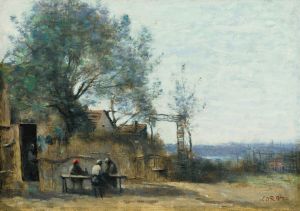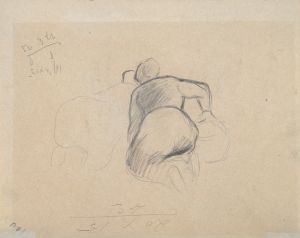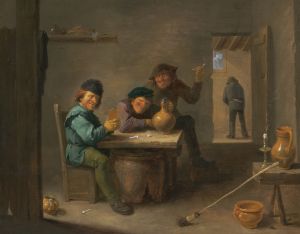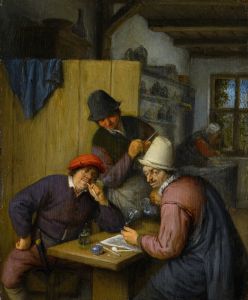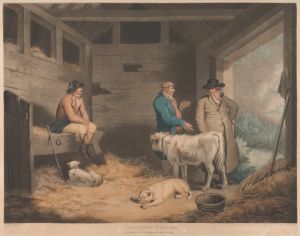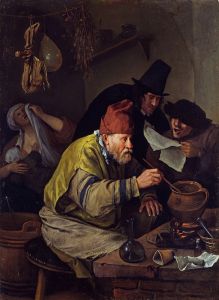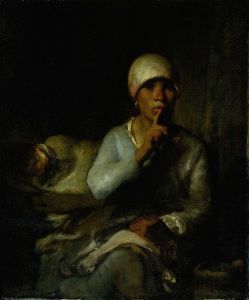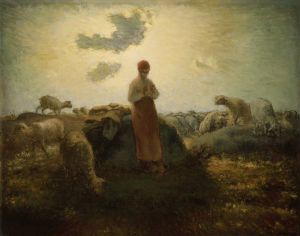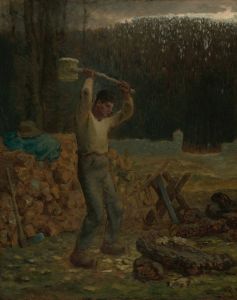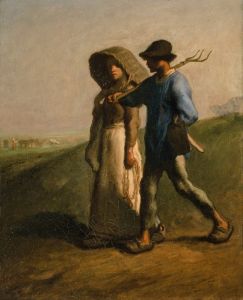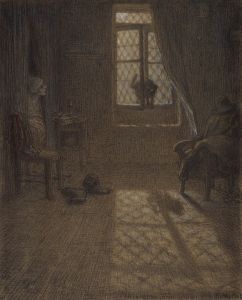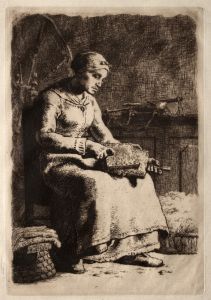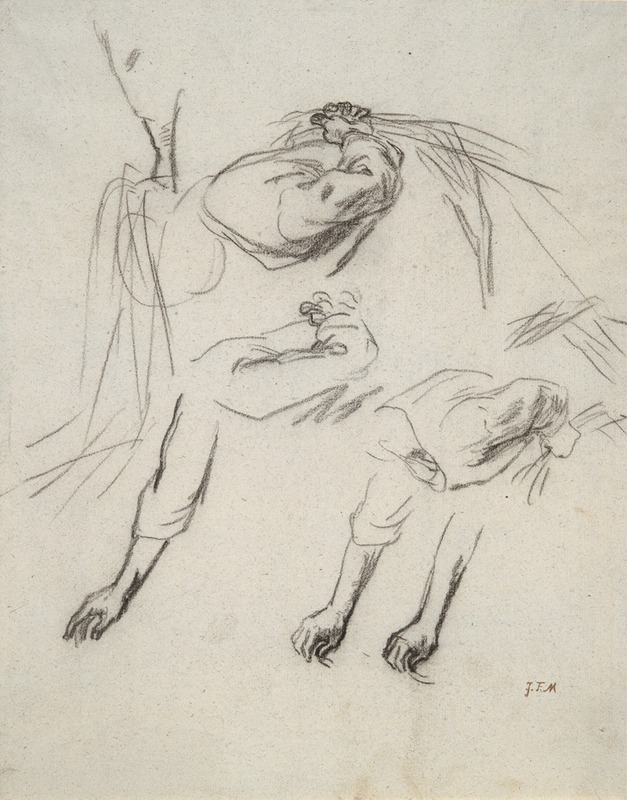
Study for The Gleaners
A hand-painted replica of Jean-François Millet’s masterpiece Study for The Gleaners, meticulously crafted by professional artists to capture the true essence of the original. Each piece is created with museum-quality canvas and rare mineral pigments, carefully painted by experienced artists with delicate brushstrokes and rich, layered colors to perfectly recreate the texture of the original artwork. Unlike machine-printed reproductions, this hand-painted version brings the painting to life, infused with the artist’s emotions and skill in every stroke. Whether for personal collection or home decoration, it instantly elevates the artistic atmosphere of any space.
"Study for The Gleaners" is a preparatory work by the French artist Jean-François Millet, who is renowned for his depictions of rural life and peasant labor. This study is related to his famous painting "The Gleaners," completed in 1857, which is one of Millet's most celebrated works and a significant piece in the Realism movement.
Jean-François Millet was born on October 4, 1814, in Gruchy, a small hamlet in Normandy, France. Coming from a farming background, Millet was deeply familiar with the rural lifestyle and the hardships faced by peasants. This personal connection to the land and its people profoundly influenced his artistic focus and thematic choices.
"The Gleaners" depicts three peasant women gleaning a field of stray stalks of wheat after the harvest. This practice, known as gleaning, was a common right for the poor in rural communities, allowing them to collect leftover crops from farmers' fields. The painting is notable for its sympathetic portrayal of the peasant class and its focus on the dignity and endurance of rural laborers.
The study for "The Gleaners" would have been part of Millet's process of developing the final composition. Artists often create studies to experiment with composition, form, and lighting before committing to the final version of a painting. These studies can be in the form of drawings, sketches, or smaller painted versions. They provide insight into the artist's creative process and the evolution of their ideas.
Millet's work, including "The Gleaners," was initially met with mixed reactions. While some praised his realistic portrayal of rural life, others criticized it for its focus on the lower classes, which was considered controversial at the time. The painting was exhibited at the Salon of 1857, where it drew attention for its social commentary and its departure from the idealized subjects that dominated the art world.
The study for "The Gleaners" reflects Millet's commitment to capturing the essence of peasant life with authenticity and respect. His use of earthy tones and attention to detail in the figures' posture and clothing emphasizes the physicality of their labor and the harsh realities of their existence. Millet's work is often associated with the Barbizon School, a group of artists who sought to depict the natural world and rural life with sincerity and realism.
Today, "The Gleaners" is celebrated for its artistic merit and its role in highlighting social issues of the 19th century. Millet's empathetic portrayal of the peasantry has influenced generations of artists and continues to resonate with audiences worldwide. The study for this iconic painting remains an important piece in understanding Millet's artistic journey and his contribution to the Realism movement.





